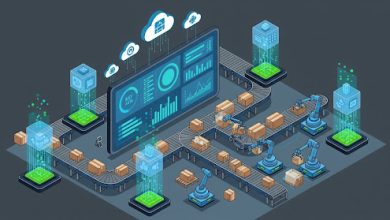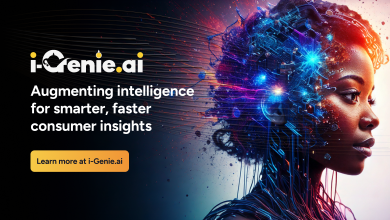
With the rapid uptake of AI technology over the past few years, it was natural to assume that AI was the next wave in technological transformation. Many change managers may think they need to develop a “rinse-and-repeat” playbook for AI change, as they had with the wave of cloud implementations that came before it. What they soon found was that introducing AI is very different, and it requires a markedly different approach.
But amid a breakneck pace of evolution, many organizations simply don’t know how to move forward. While change managers surveyed recently by Prosci say incorporating AI tools into their practices has increased efficiency (30% of respondents), enhanced communication (19%), and helped support content creation (19%), many say their use of AI in change management is being held back by uncertainty over how to implement and use AI for this purpose. In addition, some organizations and industries are more hesitant than others to use AI for any use case, particularly in those industries where data privacy is a particular concern.
Overcoming that reluctance to embrace AI to manage change will require an intentional approach. Here’s what you need to know to help your organization make the most of AI to manage change.
AI Has Made Change Dynamic
There’s nothing static about a tech implementation involving AI. In the past, leaders overseeing a change—for example, a new piece of technology—were working with a fairly prescriptive timeline and set of features they implemented to deliver a specific capability or set of capabilities. The change was incremental; once a set of features was adopted, they could then turn their sights on the next rollout.
When a company decides to use AI technologies, whether for a specific project or across the organization, it’s a lot like navigating a complex, constantly shifting landscape. AI functionality is not a simple user flow (click this, click that, and ta-da, you did it); rather, its uses are in many ways unlimited. As a result, the goal of change management with AI is to not only prepare employees for the current AI tool in front of them but also enable them to learn and grow faster. How they learn to use the tool is a traditional change management problem, but how they master the application it is an art that will require further reinforcement and continuous learning.
With change now dynamic and process change increasing in frequency, change management requires an increasingly adaptive approach. Change leaders may roll out a new tool, train end users, and develop policies around the use of the tool, but the work doesn’t stop there—as the tool evolves and new use cases within the organization emerge, organizations must manage to change differently, helping users not only learn how to use and fully embrace the new technology but also develop an approach to foster continuous learning as the tool itself evolves.
AI Itself Is Creating Change, but It Can Also Enable It
AI is well-known for its role in precipitating change across industries—for example in the travel industry, which now relies on chatbots that facilitate human-like interaction with customers, or in retail, which uses AI to deliver highly personalized customer journeys. With an eye toward provoking change, leaders today invest time and resources in developing and delivering AI-powered solutions that can gather and analyze data to identify the areas in which their people, processes, and technology need to evolve. In delivering these insights, AI fuels decision-making and spurs transformation.
But AI’s role isn’t limited to provoking change; it is also playing an increasingly important role in helping organizations enable and manage it. Change leaders are already harnessing AI for a variety of uses related to change management, including:
- Communication: Change managers are using the communication features of generative AI to produce content more quickly and easily adjust the tone and style to their audience or sender.
- Employee support: Leaders can launch a chatbot and have it ingest all the change materials developed, from FAQs to key messages and more. Armed with change-specific information, the chatbot can then support employees more quickly and efficiently.
- Job skills: Organizations can use AI to match employee data to job requirements, providing transparency for current employees and identifying skill gaps related to the change initiative.
- Sentiment analysis and persona mapping: Change leaders can leverage AI to identify and understand personas across the organization, making sense of vast amounts of data on everything from career stage to role and more. This helps ensure that change leaders are asking the right questions of the right audiences and targeting communication as well as training effectively.
- Compliance and end-user training: AI transforms training from a labor-intensive process that takes employees through a static set of questions to a highly interactive module that feels as if individuals are engaging with a human who can respond to their questions. Sentiment analysis can also help determine how employees are feeling about the training and gauge adoption in a much more insightful way than post-training surveys.
- Stakeholder engagement: AI complements change managers’ efforts during the stakeholder engagement process by providing data-driven insights, automation, and adaptability. AI-enabled chatbots are always on, which means they can collect and ingest feedback and analyze employee sentiment around the clock. They can also help change leaders identify and address any areas of resistance to change within the organization. More advanced uses of AI also allow organizations to be more responsive to end users, moving beyond general FAQs to offer a truly interactive, 24/7 help desk run by chatbots.
How AI Is Shifting Your Change Management Work
As many organizations look to bring AI into their tech stack, one thing has become clear: AI is not just another tech implementation. In contrast to tech implementations of the past, which were static, highly orchestrated, and authoritarian, AI is dynamic and constantly learning and evolving, which means change managers need to be able to support the adoption of a tool without knowing what full adoption will look like. It requires a shift from teaching people how to use a tool with a specific use to teaching them how to be taught, so they can grow along with the technology. And that, in turn, requires equipping leaders to enable and embrace a culture that allows people to do so.
As with any change, organizations looking to harness AI to manage change will have to build momentum around something that’s fairly unknown and growing exponentially. Start by asking yourself: What quick wins can you find? What kind of strategic roadmap can you put together to show how AI enables your core business objectives, and how do you continue to find use cases you can then broadcast to employees, end users, and the organization as a whole? By embracing AI to both provoke and manage change, even in the smallest of ways, you can begin to create a culture where people are willing to opt in to change and position your organization to evolve just as quickly as AI does.




